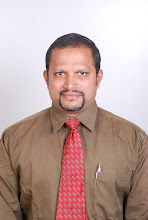
A pilgrimage to the Holy Shrine of Shri Mata Vaishno Devi Ji is considered to be one of the holiest pilgrimages of our times. Popular the world over as Moonh Maangi Muradein Poori Karne Wali Mata, which means, the Mother who fulfills whatever Her children wish for, Shri Mata Vaishno Devi Ji resides in a Holy Cave located in the folds of the three peaked mountain named Trikuta (pronounced as Trikoot). The Holy Cave attracts lakhs of devotees every year. In fact, the number of Yatris visiting the Holy Shrine annually now exceeds 5 million. This is due to the unflinching faith of the devotees who throng the Shrine from all parts of India and abroad.
The Holy Cave of the Mother is situated at an altitude of 5200 ft. The Yatris have to undertake a trek of nearly 12 km from the base camp at Katra. At the culmination of their pilgrimage, the yatries are blessed with the Darshans of the Mother Goddess inside the Sanctum Sanctorum- the Holy Cave. These Darshans are in the shape of three natural rock formations called the Pindies. There are no statues or idols inside the Cave.Darshans are open round the clock throughout the year.
Since the year 1986, when the Shri Mata Vaishno Devi Shrine Board (commonly called Shrine Board) was formed (under “The Jammu & Kashmir Shri Mata Vaishno Devi Shrine Act, 1986’), the management of the Shrine and regulation of the Yatra has been vested in the Board. The Board has undertaken a number of developmental activities aimed at making the Yatra a comfortable and satisfying experience for the Yatris. So far, over 125 crores of rupees have been invested by the Board for providing various infrastructural and other facilities. The Board continues to reinvest the offerings and donations received in carying out improvements in various kinds of Yatri facilities.
The journey to the Holy Shrine of Shri Mata Vaishno Devi Ji starts with the Call of Mata. It is not only a belief but also a strong experience of one and all that the Divine Mother sends a call to her children. And once a person receives it, wherever he is, is bound to visit the Mother to receive Her unbounded love and blessings. A popular slogan in the local folklore beautifully expresses it- Maan Aap Bulandi - which means that The Mother Herself Calls! It is also a matter of experience by almost all those who visit the Holy Shrine that upon the Call of Mata, a person needs to just take one step and leave the rest to Her and his journey gets completed with Her divine blessings. Simultaneously, it is also believed that unless there is a call or Bulawa no one can visit the Shrine or have Her blessings, howsoever high or mighty one may be.
History of the Holy Shrine...Like with most old Shrines, it is not possible to ascertain when exactly the pilgrimage to the Holy Shrine started. A geological study of the Holy Cave has indicated its age to be nearly a million years. Vedic literature gives no reference to the worship of any female deity, although the mountain Trikuta does find its mention in Rigveda, the oldest of the four Vedas The practice of worshipping Shakti, largely started in the Puranic period.
The first mention of the Mother Goddess is in the epic Mahabharat. When the armies of Pandavs and Kaurvas were arrayed in the battlefield of Kurukshetra, Arjun, the chief warrior of Pandavs upon advice of Sri Krishna; meditated upon the Mother Goddess and sought Her blessings for victory. This is when Arjun addresses the Mother Goddess as ‘Jambookatak Chityaishu Nityam Sannihitalaye’, which means ‘you who always dwell in the temple on the slope of the mountain in Jamboo’ (probably referring to the present day Jammu).
It is also generally believed that the Pandavs were the first to build the temples at Kol Kandoli and Bhawan in reverence and gratitude for the Mother Goddess. On a mountain, just adjacent to the Trikuta Mountain and overlooking the Holy Cave are five stone structures, which are believed to be the rock symbols of the five Pandavs.
Perhaps the oldest reference of the visit of a historical figure to the Holy Cave is that of Guru Gobind Singh who is said to have gone there via Purmandal. The old foot track to the Holy Cave passed through this well-known pilgrimage centre.
Some traditions believe this Shrine to be the holiest of all Shaktipeeths (a place where the Mother Goddess, the Eternal Energy has Her abode) since the skull of Mata Sati fell here. Others believe that her right arm had fallen here. But some scriptures do not agree with it. They do agree that at a place called Gandarbal in Kashmir, the right arm of Sati had fallen. Nevertheless, in the Holy Cave of Shri Mata Vaishno Deviji, one does find stone remains of a human hand, popularly known as Varad Hast (the hand that grants boons and blessings).






No comments:
Post a Comment